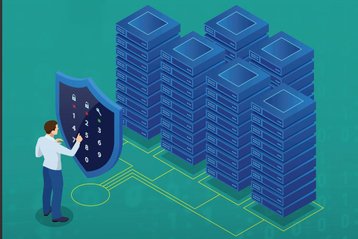At times, companies will need to move data around. This has never been an easy task.
In fact, it is only going to increase in complexity as more and more businesses move into a hybrid cloud environment.
Our own research found that nine in ten IT decision-makers say their organizations are planning to move more systems to the cloud over the next two years.
In order to ensure the transition to a hybrid cloud environment runs smoothly, there are a variety of steps an enterprise must take.
Making the move
This can be a lengthy and difficult process because there are several steps an organization should take.
They should ensure that their data and applications are highly available, protected and recoverable, and have the insights to drive operational efficiency and regulatory compliance.
If this process is ignored, an organization can put themselves at risk of downtime and reputational damage.
Most organizations are in the process of moving at least some of their workloads to the cloud.
The reason they are choosing this path is that they recognize the benefits of resiliency, data security, and the ability to stretch their budgets by moving capital expenditure costs to operating expenditures.
How quickly and reliably this can be done will influence the pace of digital transformation.
The complexity associated with a hybrid IT environment means problems will be unavoidable.
While 94 percent of the respondents in our study said they were confident in their cloud service provider’s (CSP) ability to protect workloads against outages, over a third admitted to having experienced cloud service disruptions.
Subsequently, 73 percent reported downtime, which resulted in 43 percent experiencing difficulties with customer satisfaction.
These statistics show a need for IT departments to provide protection that extends further than CSPs offer.
Having data visibility
The first step of any data migration project is working out what data actually needs to be moved.
This means having a clear understanding of what data exists, where it resides, how sensitive it is, and who needs to access it.
Unsurprisingly, a hybrid IT environment makes this difficult to achieve, as it is often fast-growing and fragmented.
An immersive visual experience that offers a complete picture of the data an organization is holding, regardless of where that data is, is one method through which a business can obtain an understanding of its data.
This will help in identifying areas of value, risk, and waste, thus reducing the cost of unnecessary data storage and pointless migration.
Ensuring data is protected
In environments where multiple clouds interoperate, blind spots can wreak havoc. In order to avoid disaster, organizations need to have a data protection solution that can help backup and recover data across different environments, whether on-premises, virtual or cloud.
Ensuring all data is secure is challenging in a hybrid IT environment given the various locations, platforms, and applications in which it is stored.
Once an organization understands the data it has and its relevance to the business, it can then decide what needs to be protected.
Various CSPs and customized private clouds add an additional layer of complexity as IT systems often need several disparate tools to do this.
The type of backup method adopted has to be considered according to the type of data, and its value to the business.
The more business-critical the data is, the closer it must be held to the organization, allowing for immediate recovery.
Data that is archived and infrequently accessed can be stored cost effectively offsite using cloud-based storage.
The key to success is maintaining visibility and control in order to strike the right balance between recovery, compliance requirements and costs.
If a business decides against implementing these measures, it is putting itself at risk of downtime during migration.
Downtime not only risks data loss, but it can also result in business operations grinding to a halt.
This has an impact from both a direct monetary perspective and subsequent long-running customer and stakeholder dissatisfaction.
This makes it near-impossible to put a cost on the true repercussions of downtime.
Whose responsibility is it?
When it comes to the cloud, there are often misconceptions around which party holds the ultimate responsibility for data management.
According to the study, eight out of ten organizations mistakenly believe their cloud service providers take care of data protection.
However, many cloud contracts state that the customer must back up its data and retains ultimate responsibility.
This misunderstanding is putting many companies’ reputations at stake.
Enterprises need to understand that they must back up their data, regardless of it being held onsite, or in public or private clouds.
If this is not understood, they risk serious corporate losses.
Staying safe when migrating data
To surmise, organizations cannot risk critical data getting lost because of a complex, disparate IT environment.
This means that data management and protection should not be one-off activities, but instead an ongoing strategy.
A business must ensure it has optimal data visibility, which is best achieved through a visualization of the entire data ecosystem.
When a full picture of an enterprise's data is understood, it is then able to be protected.
But remember, each dataset should have a backup method that is tailored to its value to the business.
Once those strategies have been implemented, businesses will be able to migrate their data to the cloud as safely as possible.




